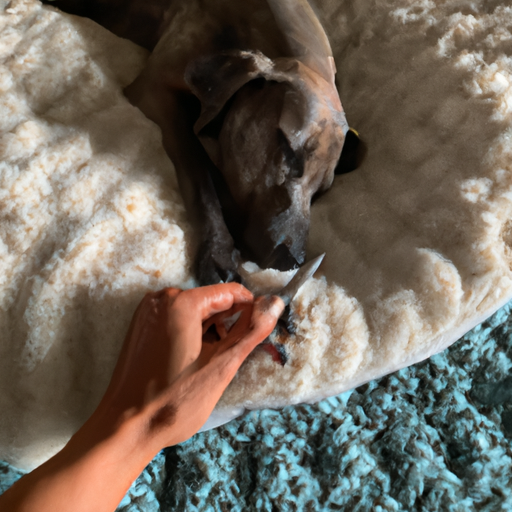As a caregiver for your furry friend, it’s crucial to understand the importance of regular nail trimming. Not only does it keep your dog comfortable, but it also prevents painful injuries and complications.
Why is Regular Nail Trimming Important?
The regularity of nail trimming often depends on your dog’s breed, age, and lifestyle. However, generally, it’s recommended to trim your dog’s nails approximately every 3-4 weeks.
- Comfort: Long nails can cause discomfort, especially when walking or running. They might also make your dog walk awkwardly, leading to potential joint problems over time.
- Preventing Injuries: Overgrown nails can curl and grow into your dog’s paw pads, causing pain and possibly leading to infections.
- Indoor Safety: Long nails can scratch hardwood floors, snag on carpets, and even injure people unintentionally.
Signs that Your Dog’s Nails Need Trimming
If you’re unsure whether it’s time for a trim, look out for these signs:
- Clicking Sounds: If you hear a clicking sound when your dog walks on hard surfaces, it’s likely time for a nail trim.
- Visual Check: If the nails are curling inwards or touching the ground when your dog is standing still, they are too long.
- Discomfort or Limping: If your dog appears to be walking uncomfortably or limping, long nails might be the cause.
How to Trim Dog Nails Safely
Trimming your dog’s nails can be a daunting task, especially if you’re new to it. Following these steps can make the process smoother:
- Choose the Right Tool: There are several types of nail clippers available, including guillotine-style clippers, scissor-type clippers, and grinders. Choose the one most comfortable for you and your dog.
- Prepare Your Dog: Before starting, ensure your dog is calm and comfortable. You might want to have treats at hand to reward your dog throughout the process.
- Trim Carefully: Avoid cutting into the quick (the sensitive part of the nail that contains nerves and blood vessels). If you accidentally cut into the quick, use a styptic powder to stop the bleeding.
- Reward Your Dog: After each nail is trimmed, reward your dog with a treat. This helps to make nail trimming a positive experience for your dog.
Professional Grooming Services
If you’re uncomfortable trimming your dog’s nails yourself, professional grooming services are a great alternative.
| Advantages | Disadvantages |
|---|---|
| Professionals are experienced in handling dogs and trimming nails | Can be expensive over time |
| Reduces the risk of cutting into the quick | Some dogs may not feel comfortable with strangers |
| Convenient for busy dog owners | Requires travel to the grooming salon |
FAQ
Q: How often should I trim my dog’s nails?
A: Generally, every 3-4 weeks, but it can vary depending on your dog’s lifestyle and breed.
Q: What if I cut into the quick?
A: Use a styptic powder to stop the bleeding and prevent infection.
Q: Can I file my dog’s nails instead of clipping?
A: Yes, filing is a good alternative, especially for dogs that are afraid of nail clippers.
Understanding the importance of regular nail trimming and knowing how to safely carry out the task can greatly improve your dog’s comfort and wellbeing. As a caregiver, being proactive in your dog’s grooming routine can prevent unnecessary discomfort and injuries.



